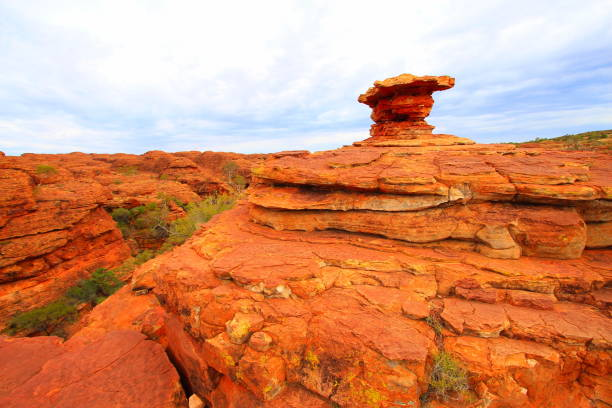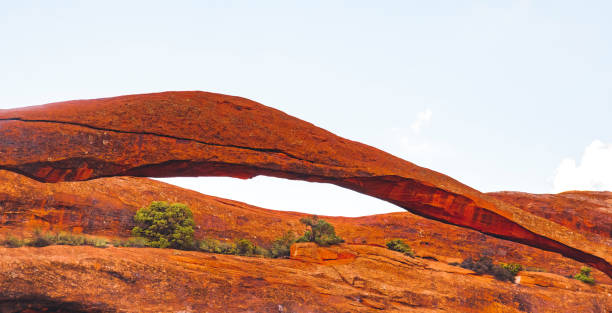Few landscapes in the world capture the imagination quite like Uluru does. Rising majestically from the central Australian outback, Uluru, also known as Ayers Rock, is a massive sandstone monolith that is sacred to the indigenous Anangu people and beloved by visitors from around the globe. This awe-inspiring natural wonder is not only a geological marvel but also a cultural and spiritual icon. In this article, we will explore the multifaceted allure that makes Uluru so special. From its ancient origins and unique flora and fauna to its vibrant, transformative colors, Uluru is a testament to the timeless beauty of our planet and the deep connection between land and culture.
The Historical Significance of Uluru
Uluru’s history dates back hundreds of millions of years, and its presence has been felt for millennia by the indigenous people of Australia. Ancestors of the Anangu lived around Uluru and passed down stories of its creation and significance through generations. For the Anangu, Uluru is part of their Tjukurpa or law, which encompasses religion, morality, and governance. Visitors from across the world come to experience the ancient energy and learn about the traditional owners of the land.
Uluru’s Cultural Importance to the Anangu People
The Anangu people’s connection to Uluru is profound and encompasses all aspects of their life. The rock formations, caves, and watering holes around Uluru feature prominently in their Dreamtime stories and ceremonies. These stories are often depicted in rock art found within the national park surrounding Uluru, serving as a gateway to understanding the rich tapestry of Aboriginal culture and the immense respect this culture holds for this special place.
The Geology of Uluru: More Than Just a Rock

Uluru is not only spiritually significant but also a geological enigma. This solitary giant began its formation around 550 million years ago, and the processes that shaped it have intrigued scientists and visitors alike. The seemingly smooth surface of the rock disguises an intricate network of valleys, ridges, and caves, each with their own story.
The wonder of Uluru’s formation begins deep within the Earth’s crust, where sedimentary layers were folded and bent over the course of millions of years. The erosion-resistant sandstone that makes up Uluru has withstood the forces of nature, standing tall while the surrounding weaker rock was worn away.
Uluru is made up primarily of a type of sandstone infused with minerals like feldspar and traces of iron that lend a unique texture and hue to its surface. This colossus domes upward and measures a staggering 348 meters in height and about 6 kilometers in length, making it an imposing figure in the flat desert landscape.
The Colors of Uluru: An Ever-Changing Palette

One of the most mesmerizing aspects of Uluru is the way its colors fluctuate with the light. As dawn breaks and dusk falls, Uluru transforms with hues ranging from deep reds to purples, glowing oranges to subtle pinks. This daily light show is a visual symphony that never repeats itself in exactly the same way.
To fully appreciate the splendor of Uluru’s colors, many visitors opt for a 2 day Uluru tour that includes viewing the rock at both sunrise and sunset. These two moments provide the most dramatic changes in light and offer a breathtaking experience as Uluru’s silhouette is set ablaze with the sun’s rays.
The shifting colors of Uluru are not merely a matter of changing light but are also influenced by weather conditions and the rock’s iron content. When it rains, Uluru can appear silver or black, with waterfalls cascading down its slopes, transforming the arid rock into an ephemeral spectacle of new life and color.
Uluru’s Wildlife: A Desert Haven
The area surrounding Uluru is a refuge for an array of wildlife adapted to the challenging conditions of the Australian desert. The red sands and spinifex grasslands provide shelter for reptiles, marsupials, and a myriad of birds, who all form an integral part of the ecosystem.
Endemic Species around Uluru
In the midst of this harsh environment, species such as the thorny devil lizard, the black-footed rock-wallaby, and the majestic wedge-tailed eagle have all made their homes. These creatures are a testament to the resilience of life in the outback.
Conservation Efforts in the Uluru Area
The park authorities and the Anangu work together to protect Uluru’s delicate environment and its inhabitants. Conservation programs aim to preserve the natural habitat and ensure that visitors have a minimal impact on the wildlife and the integrity of the land.
The Spiritual Essence of Uluru
Beyond its physical form, Uluru emits a spiritual resonance that is almost palpable. This is a place of deep Dreamtime significance, where each crevice, cave, and waterhole tells a part of the Anangu’s ancient creation stories. The silent solitude of the desert amplifies Uluru’s sacredness, reminding us of our place in the universe.
Aboriginal Legends and Myths
The Anangu people’s legends and myths surrounding Uluru provide insight into their perception of existence and their harmonious bond with nature. For them, Uluru is not just a landmark but a living entity, imbued with the spirits of their ancestors and the creatures of their mythologies.
Contemporary Significance and Respect for Traditions
Today, the importance of Uluru to the Anangu remains undiminished, and visitors are encouraged to learn about and respect these ongoing cultural traditions. By honoring the spiritual significance of this place, we become more than tourists; we become part of a legacy to preserve and cherish the world’s ancient wonders.
Exploring Uluru: Responsible Tourism
While Uluru continues to attract international attention, it is crucial to practice responsible tourism. There is a delicate balance between accommodating the curiosity of visitors and preserving the sanctity and beauty of Uluru for future generations.
Walking Around Uluru: What You Need to Know
One of the best ways to experience Uluru is on foot. The base walk around Uluru is about 10 kilometers and provides an intimate perspective of the rock’s immense size and intricate details. Visitors on a 2 day Uluru tour can pace themselves and explore different paths and sites while learning about their significance.
Best Practices for Visiting Uluru Respectfully
To visit Uluru responsibly, always stick to marked paths, follow the ‘no climb’ rule strictly, and avoid taking photos of restricted areas. It’s also important to carry out all trash and to keep noise levels at a minimum to preserve the peaceful atmosphere. By following these practices, tourists help maintain the integrity of Uluru’s environment and culture.
Conclusion
Uluru stands not only as a monumental natural formation but as a symbol of cultural reverence and historical significance. This article has glimpsed into what makes Uluru so special, from its deep spiritual roots to the natural wonders that envelop it. As a UNESCO World Heritage Site, Uluru commands respect and requires our utmost responsibility in preserving its mystical beauty for generations to come.
FAQs About Uluru
| Question | Answer |
|---|---|
| Why can’t visitors climb Uluru anymore? | Visitors can’t climb Uluru because it’s a sacred site for the Anangu, the indigenous people of the area. Climbing the rock was permanently banned in October 2019 out of respect for Aboriginal culture and to protect the environment. |
| Can you visit Uluru anytime of the year? | Yes, Uluru can be visited year-round; however, the best time is from May to September when the weather is cooler. Visiting during the hot summer months can be intense, with temperatures often exceeding 35°C (95°F). |
| How old is Uluru? | Uluru is estimated to be around 550 million years old, with its formation believed to have started about 550 to 600 million years ago during the Cambrian Period. |
| Is it possible to see wildlife at Uluru? | Yes, the area around Uluru is home to a variety of wildlife, including kangaroos, wallabies, and an array of bird species. Early mornings or late afternoons are the best times for wildlife spotting. |
| Are there any specific cultural protocols tourists should follow when visiting Uluru? | Yes, it is important to respect the cultural protocols set by the Anangu people. This includes not climbing Uluru, staying on designated paths, not taking photographs of certain culturally sensitive sites, and taking all trash with you when you leave to preserve the natural environment. |
